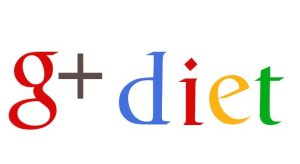The Google Diet:How Google Makes Healthier Employees
Google is well known for their innovative office environment , and especially their five star food! But with a tantalizing and calorie laden cafeteria, how do you persuade employees to cut back and make better decisions? I dunno, just like, Google it? Okay, okay, while Googling is my go to solution what I'm actually referring to is a Fast Company article. The article outlined six ways Google is now using ‘nudges’ link to prompt healthier employees.
“When employees are healthy, they’re happy. When they’re happy, they’re innovative”. And that’s good business sense.
The Google Diet Nudge
- Hard candy: M& M’s used to be stored in clear containers. Now they’re stored in opaque bins. Because it takes effort to open the bin and see inside, you’re not as enticed. The switch led to a 9% drop in caloric intake from candy in 1 week.
- Salad: The salad bar is the first thing you see in the cafeteria. People tend to fill their plates with whatever they see first. Mainly veggies means lots of nutrients with not a lot of calories.
- Small Plates: Smaller plates are offered beside a sign that tells the consumer that people with bigger dishes are inclined to eat more. This increased small plate usage to nearly 35% of total plate use.
- Color Coding: Google uses color tags on food to help give consumers health cues. Green goes with healthy veggies while desserts have a warning red.
- Bite Size Desserts: Desserts are designed to be a three bite nom-nom. By making people pause to take a second dessert plate, they are less likely to make the effort to go for round 2.
- Water Placement: Water is stored at eye level in the cooler and soda was moved to the bottom. The placement change increased water intake by 47%.
Simple and smart changes made a significant different in the behaviors of employees, so why aren’t other cafeterias doing the same? If you’re looking for more nudge ideas read ‘Nudge’ or the Nudge blog .
Dietitian Nutritionist and cookbook author sharing flavor-forward recipes and simplified science-driven wellness.

